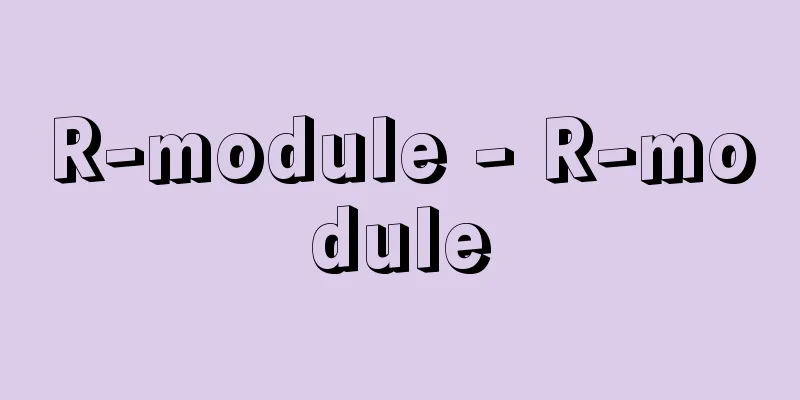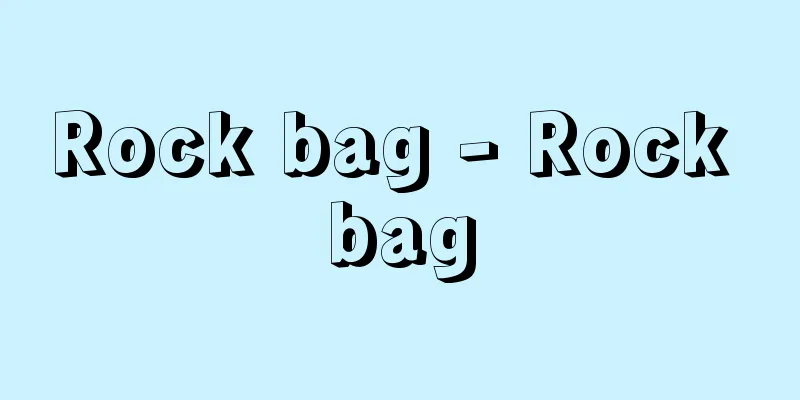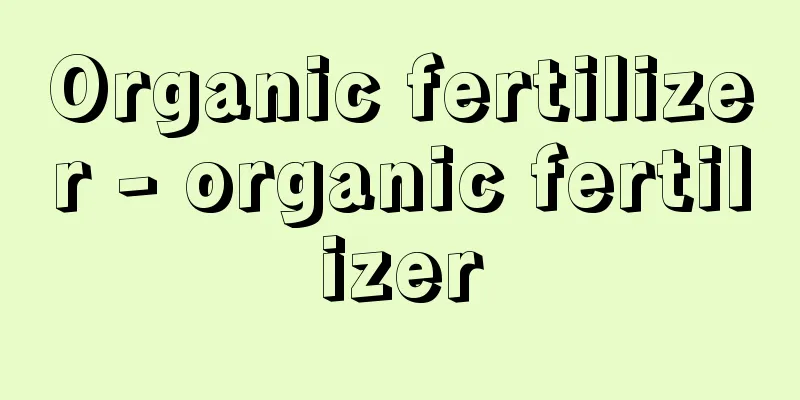Artificial dialysis - Hemodialysis

|
◎ What is dialysis? ◎Hemodialysis ◎Peritoneal dialysis (peritoneal perfusion) ◎Plasma exchange method ◎Blood adsorption (adsorption tube method) Complications of long-term dialysis What is dialysis? The most important function of the kidneys is to remove waste products and unnecessary fluids from the body, purifying the blood and keeping the body's condition constant. In the past, kidney disease was directly fatal. When kidney function declined drastically, dialysis was invented as a way to purify the blood and somehow save lives. In fact, the first time that artificial dialysis demonstrated its effectiveness was over 50 years ago during the Korean War, when it was used to treat acute kidney failure caused by war wounds. It was in the 1970s that dialysis became widely available in Japan, and any patient who needed it was able to benefit from it. Currently, there are approximately 150,000 patients undergoing maintenance dialysis, and this number is increasing every year. Japan's dialysis system is at the forefront of the world in terms of numbers, medical technology, and welfare systems. Dialysis membranes are mainly used to remove waste products and purify the blood. The most common type of dialysis membrane is hemodialysis, where blood is taken out of the body and dialyzed using a fibrous membrane. There is also a method that uses the patient's own peritoneum as the dialysis membrane (peritoneal dialysis). In addition to purifying blood through dialysis, there are various other methods, such as removing and replacing dirty plasma (plasma exchange) and absorbing harmful substances (adsorption). As mentioned above, various methods for purifying blood have been developed and are being applied. These methods are collectively called blood purification therapy. The principle is that the patient's blood is taken out of the body, harmful substances are removed from the blood by membrane separation or centrifugation, and the purified blood is returned to the patient. Taking blood out of the body and returning it back is called extracorporeal circulation. In Japan, membrane separation is the norm, but centrifugation is the norm in Europe and the United States. The type of blood purification therapy you choose depends on what harmful substances you want to remove from the blood (the size of the substances you want to remove). The table "Blood Purification Therapy" lists the types of blood purification therapies and the diseases they target. Of these, hemodialysis is the most widely used treatment for kidney failure. ◎Hemodialysis ●How dialysis worksThe artery and vein in the wrist of the non-dominant arm (usually the left wrist) are connected to arterialize the arm's vein. This makes the vein thicker, allowing enough blood to flow for dialysis. A needle is inserted into the thickened, arterialized vein (internal shunt), and the blood circulated outside the body is passed through a fibrous membrane (dialyzer), and the blood is returned to the body through another needle. Usually, two needles are required for blood removal (to remove blood from the body) and blood return (to return blood to the body), but it is also possible to remove blood and return blood with a single needle (single needle). A schematic diagram of hemodialysis is shown in the figure "How hemodialysis works." In addition to the extracorporeally circulated blood, the dialyzer also contains a perfusion (dialysis) fluid. The blood is purified by utilizing the differences in the properties of the perfusion fluid and blood. In other words, waste products such as urea nitrogen, creatinine, and unnecessary water are removed between the blood and the perfusion fluid (through the small holes in the dialyzer) through the principles of diffusion, osmosis, and ultrafiltration, and blood electrolytes are normalized. Diffusion is the property of a substance spreading throughout the body by molecular motion. Since blood urea nitrogen and creatinine have small molecular weights, they diffuse through the pores in the fibrous membrane and are removed into the dialysate. Blood components with large molecular weights (red blood cells, white blood cells, proteins, etc.) cannot pass through the small pores in the dialyzer and are not removed. In addition, since the pressure on the dialysate side is higher than the pressure on the blood side (osmotic pressure difference), water and electrolytes on the blood side flow into the dialysate side, which has a higher pressure. This is called osmosis. The process of removing water from the blood side by applying negative pressure by sucking the dialysate side with a motor is called ultrafiltration. Hemodialysis requires a large amount of dialysis fluid. ●Dialysis time and frequency Patients with chronic kidney failure undergo hemodialysis at specialized facilities for 4-5 hours each time, 2-3 times a week. People who work during the day can also undergo dialysis at night. Although not common in Japan, dialysis at home is also possible. Patients can read books or watch TV during dialysis. ●Precautions in daily life Even if you are undergoing dialysis, you can lead a life that is almost the same as a healthy person. However, it goes without saying that in order to maintain dialysis for a long time, it is necessary to restrict the amount of fluid, salt, and protein in your diet. Please follow the instructions of the doctor at the dialysis facility regarding specific dietary restrictions. Regarding travel, it is possible to take long trips by contacting the dialysis facility at your destination in advance. Patients undergoing maintenance dialysis are assigned an ideal weight. This is the most medically appropriate weight for each patient. Immediately after dialysis, fluids are removed to reach that ideal weight. If you take in too much water, you will be well over your ideal weight, causing edema (swelling) and pulmonary edema, which is extremely dangerous. Usually, a patient's weight before dialysis is 1 to 2 kg heavier than their ideal weight. In the arm where the internal shunt is made, the vein on the surface of the skin is arterialized, so be careful not to injure yourself. The internal shunt is essential for dialysis, so you must take good care of it. ◎Peritoneal dialysis (peritoneal irrigation) ●How dialysis is performedThis method uses the peritoneum as a dialyzer for dialysis (see figure "How peritoneal dialysis (peritoneal irrigation) works"). When an adult's peritoneum is expanded, it covers an area of about 2 m2. When dialysis fluid is poured into the abdominal cavity, excess water, urea nitrogen, creatinine, etc. from the blood seep into the dialysis fluid. The dirty dialysis fluid is then expelled from the body using the siphon principle. By repeating this process, the blood is purified. Peritoneal dialysis differs from hemodialysis in that it does not require expensive dialysis equipment and places less strain on the patient's circulatory system. However, it has some drawbacks, such as the fact that it must be performed repeatedly, it is time-consuming (inefficient), it is prone to causing peritonitis, it is prone to causing intestinal adhesions, and the leakage of protein into the dialysis fluid. ●CAPD (Continuous Ambulatory Peritoneal Dialysis) Recently, a method called CAPD (continuous ambulatory peritoneal dialysis), which is an improved version of peritoneal dialysis, has become popular. With this method, a catheter is placed semi-permanently in the abdominal cavity, and 2 liters of dialysis fluid (for adults) is stored in the abdomen for about six hours, after which the fluid is drained. This is repeated four times a day. A bag containing dialysis fluid is connected to the catheter and injected into the abdomen, and the empty bag is wrapped around the body for six hours, and the fluid is drained into the bag. The drained bag is discarded and replaced with a new bag containing dialysis fluid. CAPD allows dialysis to be performed while working or sleeping, so it is an excellent method for patients who are able to use it. ◎Plasma exchange Blood can be divided into the cellular components red blood cells, white blood cells, and platelets, and the remaining part, plasma. Plasma exchange is a method in which diseased plasma is separated and removed from extracorporeally circulated blood and replaced with a liquid containing protein (replacement fluid). It is performed to remove harmful plasma in diseases such as liver failure and immune disorders. ◎Blood adsorption (adsorption tube method) This method removes creatinine, urea nitrogen, and harmful substances by passing the extracorporeally circulated blood through a column (cylindrical container) filled with an adsorption substance (activated carbon). This blood adsorption is performed for kidney failure, drug poisoning, liver failure, etc. Complications of long-term dialysis The main complications of long-term dialysis include renal anemia, high blood pressure, renal osteodystrophy (dialysis-related osteopathy), and dialysis amyloidosis. For a detailed explanation of renal anemia, please refer to the column "Renal anemia." In patients with renal failure, caution is required as causes of anemia include gastrointestinal bleeding, bleeding tendency, and malignant tumors. High blood pressure is often caused by being over the ideal weight, so caution is required and lifestyle adjustments are important. Antihypertensive drugs are also administered as necessary. Renal osteodystrophy is a general term for bone complications in long-term dialysis, and is a very serious problem. Typical examples are osteomalacia and osteitis fibrosa, which are caused by a deficiency of activated vitamin D produced in the kidneys and secondary hyperparathyroidism. Fortunately, activated vitamin D can now be administered as a drug. The parathyroid glands produce important hormones related to bones, and their function increases during long-term dialysis. Joint pain, itchy skin, bone changes, ectopic calcification, etc. appear. In advanced secondary hyperparathyroidism, the enlarged parathyroid glands are removed. In long-term dialysis, aluminum contained in the dialysis fluid and oral medications accumulates, causing generalized bone pain, fractures, generalized convulsions, etc. (aluminum osteopathy). In such cases, the administration of Desferal, a drug that removes aluminum, water treatment of the dialysis fluid, and prohibition of the administration of aluminum-containing preparations are carried out. Dialysis amyloidosis is caused by the accumulation of β2 microglobulin, a small molecular weight protein that is originally excreted mainly by the kidneys. It accumulates particularly in tendons, around nerves, joints, and intervertebral discs, causing various symptoms. Lesions caused by accumulation in the joints and tendons of the hand are called carpal tunnel syndrome, and symptoms include numbness in the fingers, muscle weakness, muscle atrophy, and trigger finger. To prevent this, it is important to remove as much β2 microglobulin as possible during dialysis. When symptoms are severe, surgery is performed. Source: Shogakukan Home Medical Library Information |
|
◎人工透析とは ◎血液透析 ◎腹膜透析(腹膜灌流) ◎血漿(けっしょう)交換法 ◎血液吸着(けつえききゅうちゃく)(吸着筒法(きゅうちゃくとうほう)) ◎長期人工透析の合併症 ◎人工透析(じんこうとうせき)とは 腎臓(じんぞう)のもっとも大事なはたらきは、からだの中の老廃物や不要な水分を除去して血液をきれいにし、からだの状態を一定に保つことです。 かつて腎臓の病気は、直接死にいたる病でした。腎臓のはたらきが極端に落ちたとき、血液をきれいにして、なんとか命を救うことができないかということから、人工透析が考案されました。 実際この人工透析が初めて大きな威力を発揮したのは、50年以上前の朝鮮戦争のときで、戦傷による急性腎不全(じんふぜん)の治療に用いられました。 日本で一般に広く透析が普及し、必要な患者さんが誰でもその恩恵に浴することができるようになったのは昭和50年代です。 現在は、約15万人の患者さんが維持透析を受けています。そして、その数は年々増加しています。日本の透析は、その数、医療技術、福祉体制の面において世界の最先端にあります。 老廃物などを除去して血液をきれいにするには、おもに透析膜(とうせきまく)を利用します。透析膜としてもっとも普及しているのが、血液を体外に取り出し、線維膜(せんいまく)により透析する方法(血液透析(けつえきとうせき))です。また、透析膜として患者さん自身の腹膜(ふくまく)を利用する方法もあります(腹膜透析(ふくまくとうせき))。この透析によって血液をきれいにするほかに、汚れた血漿(けっしょう)を除去して取り替える方法(血漿交換)、有害成分を吸い取る方法(吸着)など、さまざまな方法があります。 以上述べてきたように、血液をきれいにするいろいろな方法が開発され、応用されています。これらの方法は血液浄化療法(けつえきじょうかりょうほう)と総称されています。原理は、患者さんの血液を体外に取り出し、膜分離あるいは遠心分離により、血液中の有害物質を取り除き、きれいにした血液を患者さんにもどすのです。血液を体外に取り出し、またもとへもどすことを体外循環(たいがいじゅんかん)といいます。日本では膜分離が中心ですが、欧米諸国では遠心分離が主です。 血液中のどのような有害物質を除去するかによって(除去する物質の大きさによって)、どの血液浄化療法を選ぶかが決まります。表「血液浄化療法」に血液浄化療法の種類と、それぞれの対象とする病気をまとめました。このなかで、腎不全の治療としてもっとも広く行なわれているのが血液透析です。 ◎血液透析(とうせき) ●透析のしかた 利(き)き腕でないほうの手首(多くは左手首)の動脈と静脈をつなぎ、腕の静脈を動脈化します。そうすると静脈は太くなり、透析に十分な血液が流れます。太くなって動脈化した静脈(内(ない)シャント)に針を刺し、体外循環した血液を線維膜(せんいまく)(ダイアライザー)に通し、もう1本刺した針から血液を体内にもどします。ふつうは、脱血(だっけつ)(体外へ血液を導き出す)と返血(へんけつ)(体内へ血液を送り返す)の2本の針刺しが必要ですが、1本の針で脱血と返血を行なうこともできます(シングルニードル)。図「血液透析のしくみ」に血液透析の模式図を示します。 ダイアライザーには体外循環した血液のほかに、灌流(かんりゅう)(透析)液が流れています。この灌流液と血液のそれぞれの性状のちがいを利用して、血液をきれいにします。すなわち、血液と灌流液の間(ダイアライザーの小さな孔(あな)を通して)で、拡散(かくさん)、浸透(しんとう)、限外濾過(げんがいろか)の原理により、老廃物である尿素窒素(にょうそちっそ)、クレアチニン、不必要な水などが除去され、血液の電解質は正常化されます。 拡散とは、物質が分子運動によって全体に広がっていく性質をいいます。血液の尿素窒素、クレアチニンは分子量が小さいので、拡散により線維膜の孔を通って、透析液のほうへ除去されていきます。分子量の大きい血中成分(赤血球(せっけっきゅう)、白血球(はっけっきゅう)、たんぱくなど)は、ダイアライザーの小さな孔を通過することができないため、除去されません。また、透析液側の圧は血液側の圧より高いので(浸透圧差)、血液側の水分、電解質は圧の高い透析液側のほうへ流れ込んでいきます。これを浸透といいます。透析液側をモーターで吸引して陰圧をかけ、血液側から水分を除去することを限外濾過といいます。血液透析には大量の透析液が必要です。 ●透析の時間と回数 慢性腎不全の患者さんは、この血液透析を専門施設で1回4~5時間、週2~3回続けていきます。日中仕事を持っている人は、夜間透析することもできます。日本ではあまり普及していませんが、家庭での透析も可能です。透析中は本を読んだりテレビを見ることができます。 ●日常生活の注意 透析を行なっていても、健康な人とほとんど同じような生活ができます。しかし、透析を長く維持していくためには、食事における水分、塩分、たんぱく質の制限が必要なことはいうまでもありません。食事の具体的制限については、透析施設の医師の指示にしたがってください。 旅行については、旅行先の透析施設とあらかじめ連絡をとることによって、長期旅行も可能となります。 維持透析を受けている患者さんは、理想体重というのが設定されます。それぞれの患者さんのからだにとって医学的にもっとも適切な体重値です。透析直後、その理想体重になるように除水します。水分を多くとりすぎると、理想体重をかなりオーバーすることになり、浮腫(ふしゅ)(むくみ)が現われ、肺水腫(はいすいしゅ)となり非常に危険です。ふつう透析前の体重は、理想体重より1~2kg増加している状態です。 内シャントが作製されている腕では、皮膚表面の静脈が動脈化されているので、けがなどしないように十分注意しましょう。内シャントは、透析するためにはなくてはならないものですから、大事にしなければなりません。 ◎腹膜透析(ふくまくとうせき)(腹膜灌流(ふくまくかんりゅう)) ●透析のしかた 腹膜をダイアライザーにして透析を行なう方法です(図「腹膜透析(腹膜灌流)のしくみ」)。おとなの腹膜を広げると2m2ほどの広さになります。腹腔内(ふくくうない)へ透析液を入れると、血液から余分な水、尿素窒素、クレアチニンなどが透析液のほうへにじみ出てきます。そして汚れた透析液をサイホンの原理で体外へ出します。このことをくり返すことによって、血液をきれいにします。 腹膜透析は血液透析と異なり、高価な透析装置は必要なく、患者さんの循環系への負担も少ない点がすぐれていますが、くり返し行なわなければならず、時間がかかる(効率が悪い)、腹膜炎(ふくまくえん)をおこしやすい、腸管の癒着が生じやすい、たんぱくも透析液へ出てくるなどの欠点があります。 ●CAPD(持続性携帯腹膜透析(じぞくせいけいたいふくまくとうせき)) 最近、腹膜透析を改良したCAPD(持続性携帯腹膜透析)という方法が普及してきています。この方法は、腹腔内へカテーテルを半永久的に留置して、おとなで透析液2ℓを約6時間おなかの中にためて、排液します。これを1日4回くり返すわけです。透析液の入った袋をカテーテルにつないでおなかの中へ注入して、空になった袋を6時間からだに巻きつけておいて、その袋の中に排液するわけです。排液された袋を捨てて、新しい透析液の入った袋とかえます。 CAPDは、はたらいているときや睡眠中でも透析できるわけですから、患者さんにとっては、これが使用できる状態であれば、たいへんよい方法です。 ◎血漿交換法(けっしょうこうかんほう) 血液は、細胞成分としての赤血球、白血球、血小板と、それ以外の部分の血漿に分類できます。 血漿交換は、体外循環した血液から病的な血漿を分離・除去して、除去した血漿のかわりに、たんぱくをまじえた液(置換液)によって置き換える方法です。 肝不全、免疫異常などの病気で、悪影響をおよぼしている血漿を取り除くために行なわれます。 ◎血液吸着(けつえききゅうちゃく)(吸着筒法(きゅうちゃくとうほう)) 体外循環した血液を吸着物質(活性炭)で充填(じゅうてん)したカラム(筒状の容器)に通すことによって、クレアチニン、尿素窒素、有害物質を除去する方法です。腎不全、薬物中毒、肝不全などで、この血液吸着が行なわれます。 ◎長期人工透析(じんこうとうせき)の合併症 長期透析のおもな合併症として腎性貧血、高血圧、腎性骨異栄養症(じんせいこついえいようしょう)(透析性骨症(とうせきせいこつしょう))、透析アミロイドーシスをあげることができます。 腎性貧血についての詳しい解説は、コラム「腎性貧血」を参照してください。腎不全患者さんでは貧血の原因として、消化管出血、出血傾向、悪性腫瘍(あくせいしゅよう)などもありますから注意が必要です。 高血圧は、理想体重をオーバーしているために生ずることが多いので、注意が必要で、生活の節制が重要です。降圧薬も必要に応じて投与されます。 腎性骨異栄養症は、長期透析における骨の合併症の総称で、非常に大きな問題です。代表的なのは、腎臓でつくられる活性型ビタミンDの欠乏と二次性副甲状腺機能亢進症(ふくこうじょうせんきのうこうしんしょう)が背景となる骨軟化症(こつなんかしょう)と線維性骨炎(せんいせいこつえん)です。幸い現在では活性型ビタミンDは、薬として投与することができます。副甲状腺は骨に関係する重要なホルモンをつくっていますが、長期透析では副甲状腺のはたらきが亢進してきます。関節痛、皮膚のかゆみ、骨変化、異所性石灰化などが現われてきます。進行した二次性副甲状腺機能亢進症では、大きくなった副甲状腺を切除します。 長期透析では、透析液や内服剤に含まれているアルミニウムが蓄積し、全身骨痛、骨折、全身けいれんなどが生じます(アルミニウム骨症(こつしょう))。こうした場合には、アルミニウムを除去する薬剤のデスフェラールの投与、透析液の水処理、アルミニウム含有製剤の投与禁止などが行なわれます。 透析アミロイドーシスは、おもに腎臓からもともと排泄(はいせつ)される分子量の小さいたんぱくであるβ2ミクログロブリンの蓄積によって生じます。とくに腱(けん)、神経周囲、関節、椎間板(ついかんばん)に蓄積されていろいろな症状をおこします。手の関節、腱などへの蓄積による病変を手根管症候群(しゅこんかんしょうこうぐん)(「手根管症候群」)といい、手指のしびれ、筋力低下、筋萎縮(きんいしゅく)、ばね指などがみられます。これを防ぐには、透析中できるだけβ2ミクログロブリンを除去するようにすることがたいせつです。症状が強いときには、手術を行ないます。 出典 小学館家庭医学館について 情報 |
Recommend
Stone saw - Ishinoko
A flat chipped stone tool with a sawtooth blade. S...
Kanemaki Temple
...It was originally a Hosso sect temple, then ch...
Wang Hong-wen
Born: 1935 in Jilin, Changchun Died: August 3, 199...
Atreus
…The Atreus family, in Greek mythology, was a pow...
Wang Gui
…In the 8th to 9th century, Wang Jian of the midd...
maxilla
The maxilla is a pair of bones located in the upp...
Atchi Zori - Atchi Zori
... Footwear is not only related to marriage cust...
Elamite - Elamugo
A language spoken in the ancient Elamite region, ...
Lord Chamberlain's Men
…Actors eventually received the patronage of roya...
Meliola
...Sooty mold rarely causes definitive damage, bu...
Economic Rehabilitation in Occupied Areas
...A general term for "Government and Relief...
Paddlefish - Paddlefish (English spelling)
A freshwater fish belonging to the order Acipense...
Strabismus - Shashi (English spelling)
◎ One eye is misaligned [What kind of disease is i...
ICOM
→International Council of Museums Source: Shogaku...
Walled City - Ikakutosi
A city surrounded by a wall. There were many in Ch...








![Tazawa [Hot Springs] - Tazawa](/upload/images/67cc20b50d0f0.webp)
